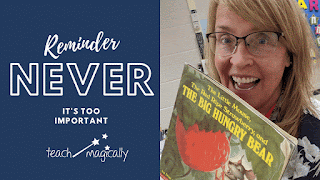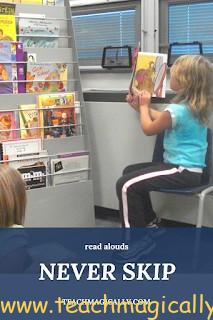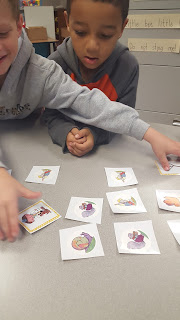Tips and Tricks for Read Aloud Time
The best tips and tricks for read aloud time can happen easily if you make read aloud time interactive. The skills that you can teach through a read aloud happen naturally. Therefore, read aloud time can combine phonemic awareness along with phonics seamlessly.
Tips and Tricks for Read Aloud Time
Remember, reading is not as easy as learning to talk.
Reading involves understanding letters and sounds which have nothing to make connections with so it’s difficult.
- Students have to be able to read words fluently to understand the comprehension.
- They also have to be able to figure out vocabulary words that they may have never learned before.
- Lastly, they have to learn to self monitor if things do not make sense to them when they are reading independently.
Tips and Tricks for Focus
📌THIS IMAGE FOR LATER
Tips and Tricks for Planning
- Plan to read the text more than once, with each repeated reading it will help the students understand the comprehension.
- Think about questions you can ask to develop a students comprehension skills. (Here is the link to access my sheet of comprehension questions)
- Before and during that read aloud, focus on vocabulary and building the background of that knowledge. When they do not know a word use the picture, use the clues to help them figure it out through the book, or use self talk to explain the word.
- When rereading, prompt the students to recall the details that they remember from the story.
- Reinforce vocabulary by discussing comprehension questions that develop lower and higher level questions.
- Look for other ways to connect the story to different items in your curriculum.
Tips and Tricks to Make It Interactive
- Provide opportunities for discussion, try partner discussion with 1-2 people.
- Have the students draw a quick sketch of what they think might happen in the story.
- Have them act the story out.
- Have the students close their eyes and imagine the scene that they are seeing.
- Let the students explain what they are thinking while reading the story.
Check out the questions I ask as I read.
Skills Tips and Trips
- Introduce the title (for example Baby Owls)
- Ask them, “What do you know about baby owls?” Discuss
- Count the words in the title, clap multisyllabic words, focus on sight words known
- Try to make a connection with a prior story.
- As you read, remember to use pictures and words within the story to help them understand vocabulary that they might not know yet. Try to incorporate those words throughout the week and in later classroom discussions.
- If something doesn’t make sense to you explain to them why you are rereading it and clarify what you did to make it make sense. Use what you are thinking to help them. (When I do this, I close the book and put it down. This will help the kiddos understand it’s my thinking not the words in the book.)
- At the end of the story make an inference- talk about how the character in the story acted or how they feel. Click here to get some general Comprehension Questions to ask for any title.
- Summarize the story and add a connection
Remember, if there is not enough time in the day, you do not have to do everything we talked about, you can customize the skills you know your students need to work on when they are reading BUT never skip the read aloud time!
💖Hugs,
Debora






